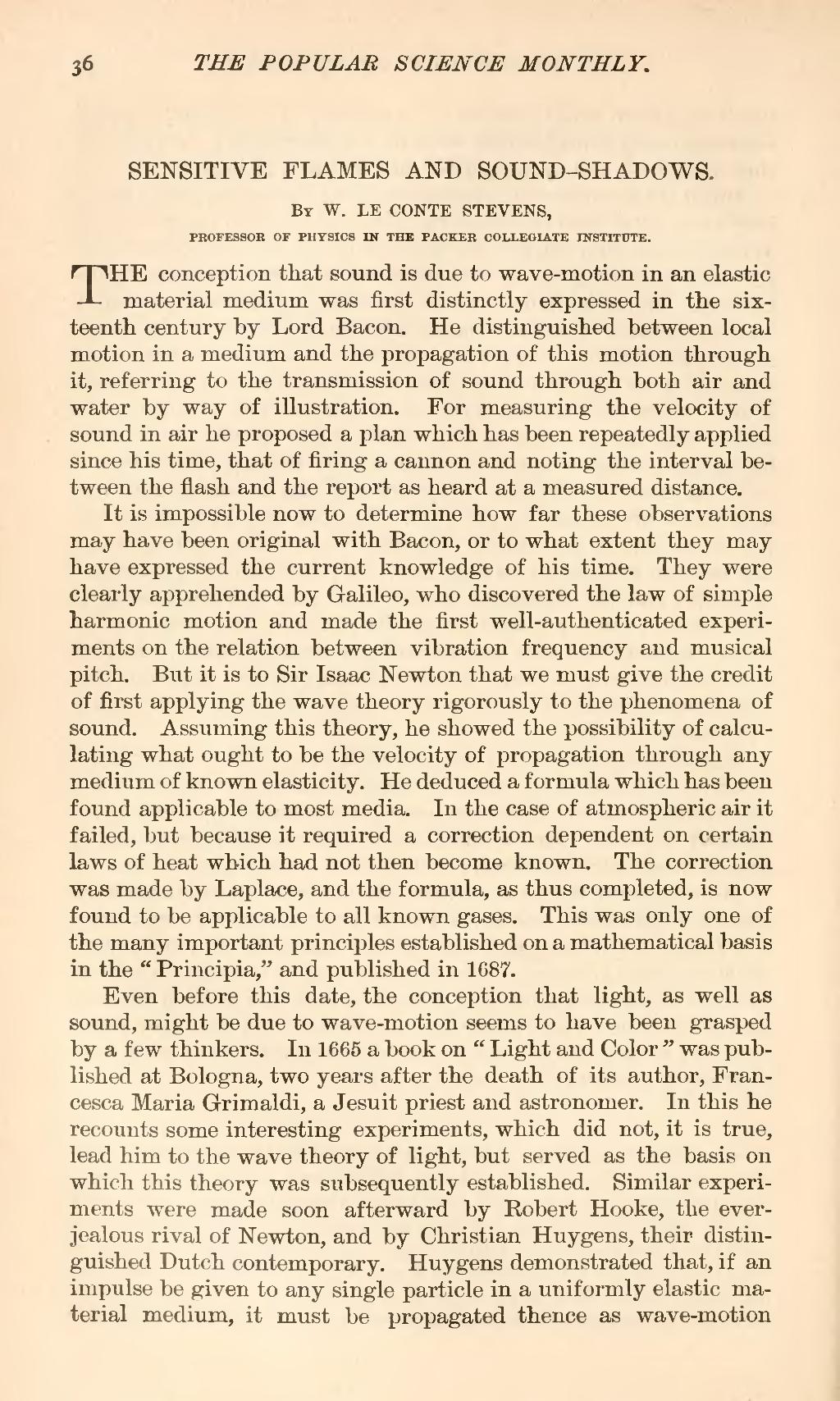| SENSITIVE FLAMES AND SOUND-SHADOWS. |
By W. LE CONTE STEVENS,
PROFESSOR OF PHYSICS IN THE PACKER COLLEGIATE INSTITUTE.
THE conception that sound is due to wave-motion in an elastic material medium was first distinctly expressed in the sixteenth century by Lord Bacon. He distinguished between local motion in a medium and the propagation of this motion through it, referring to the transmission of sound through both air and water by way of illustration. For measuring the velocity of sound in air he proposed a plan which has been repeatedly applied since his time, that of firing a cannon and noting the interval between the flash and the report as heard at a measured distance.
It is impossible now to determine how far these observations may have been original with Bacon, or to what extent they may have expressed the current knowledge of his time. They were clearly apprehended by Galileo, who discovered the law of simple harmonic motion and made the first well-authenticated experiments on the relation between vibration frequency and musical pitch. But it is to Sir Isaac Newton that we must give the credit of first applying the wave theory rigorously to the phenomena of sound. Assuming this theory, he showed the possibility of calculating what ought to be the velocity of propagation through any medium of known elasticity. He deduced a formula which has been found applicable to most media. In the case of atmospheric air it failed, but because it required a correction dependent on certain laws of heat which had not then become known. The correction was made by Laplace, and the formula, as thus completed, is now found to be applicable to all known gases. This was only one of the many important principles established on a mathematical basis in the "Principia," and published in 1687.
Even before this date, the conception that light, as well as sound, might be due to wave-motion seems to have been grasped by a few thinkers. In 1665 a book on "Light and Color" was published at Bologna, two years after the death of its author, Francesca Maria Grimaldi, a Jesuit priest and astronomer. In this he recounts some interesting experiments, which did not, it is true, lead him to the wave theory of light, but served as the basis on which this theory was subsequently established. Similar experiments were made soon afterward by Robert Hooke, the ever-jealous rival of Newton, and by Christian Huygens, their distinguished Dutch contemporary. Huygens demonstrated that, if an impulse be given to any single particle in a uniformly elastic material medium, it must be propagated thence as wave-motion

